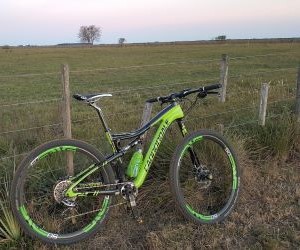Learn how to choose gravel bike geometry by comparing stability, comfort, and performance factors that match your riding style and terrain needs.
HOW DO I CHOOSE THE RIGHT MULTI-TOOL FOR CYCLING?
Choosing the right cycling multi-tool is a decision every rider eventually faces. With countless designs, functions, and sizes available, the best tool for you depends on your riding style, mechanical needs, and balance between portability and functionality. This guide breaks down the essentials, compares popular options, and gives you practical insights to make sure you’re covered on every ride without overpacking or overspending.

Understanding cycling multi-tools
Cycling multi-tools are compact, foldable instruments designed to help riders address mechanical issues on the road or trail. Whether tightening a loose bolt, adjusting gears, or fixing a chain link, the right tool can mean the difference between finishing your ride or calling for a pickup.
The design philosophy behind multi-tools combines minimalism with utility. They are built to fit in your pocket or saddlebag while offering functions that rival a small workshop. Modern versions integrate specialized tools like chain breakers, spoke wrenches, and even tubeless tire repair features.
Key functions they provide
At their core, multi-tools cover a few indispensable categories. Most include Allen keys, screwdrivers, and Torx wrenches, as these address 90% of adjustments. More advanced models add chain tools, tire levers, or CO₂ inflator compatibility.
Hex keys for bolts and stems
Torx wrenches for disc brakes
Flat and Phillips screwdrivers
Chain breaker for emergency fixes
Spoke wrench for wheel truing
Understanding these basics allows you to distinguish between overbuilt models that add weight without value and streamlined options that still cover your riding needs.
Key factors to consider
Choosing the right cycling multi-tool means striking the right balance between weight, durability, and functionality. The wrong choice might mean carrying unnecessary bulk or lacking the tool you need most in an emergency.
Weight vs. functionality
For road cyclists chasing marginal gains, every gram matters. A stripped-down, lightweight tool with only Allen keys and a Torx bit might be enough. But mountain bikers often benefit from more comprehensive models including chain tools and spoke wrenches, since trails expose bikes to more stress.
Material durability
High-quality steel ensures bits don’t round out after repeated use. Cheaper tools may corrode or break under pressure, leaving you stranded. Premium brands use chrome-vanadium or stainless steel alloys for longevity, often with side plates made from aluminum or carbon fiber for lighter weight.
Ergonomics and usability
It’s not just what tools are included, but how they feel in your hand. A tool with poor leverage may be nearly useless in real scenarios. Look for designs with rounded edges and thoughtful spacing so you can actually apply torque without scraping your knuckles.
Compact enough to carry easily
Robust steel bits for reliability
Good leverage for tough bolts
Weather resistance to avoid rust
Ultimately, your decision should reflect your ride type: a minimalist road ride kit looks very different from a self-supported touring kit.
Practical recommendations
Now that you know the basics, how do you apply them? The best approach is to identify your riding profile and match it to tool features. This ensures you’re neither overprepared nor under-equipped.
For road cyclists
If your rides are primarily on smooth roads, prioritize lightweight tools with hex keys (2–6mm), a Torx T25, and a Phillips screwdriver. These address 95% of roadside tweaks while keeping weight low.
For mountain bikers
Mountain bikers should prepare for harsher conditions. Opt for multi-tools with chain breakers, spoke wrenches, and a wider range of hex sizes. Extra leverage is also key when bolts loosen under trail vibration.
For touring and bikepacking
Touring riders benefit from more comprehensive sets that include tire levers, knife blades, or even integrated inflators. The trade-off is additional weight, but on multi-day trips, peace of mind outweighs grams.
Road: minimal, light, essential tools
MTB: robust, with chain and spoke tools
Touring: versatile, with extras for long trips
Ultimately, the right choice is about being realistic. Overbuying wastes money and adds grams you’ll resent later. Underbuying risks a ride-ending breakdown. The smartest investment is the tool that fits your real-world cycling habits.
YOU MAY ALSO BE INTERESTED






